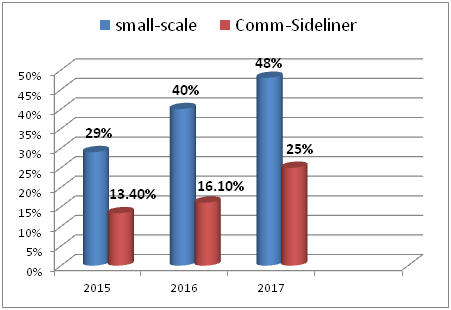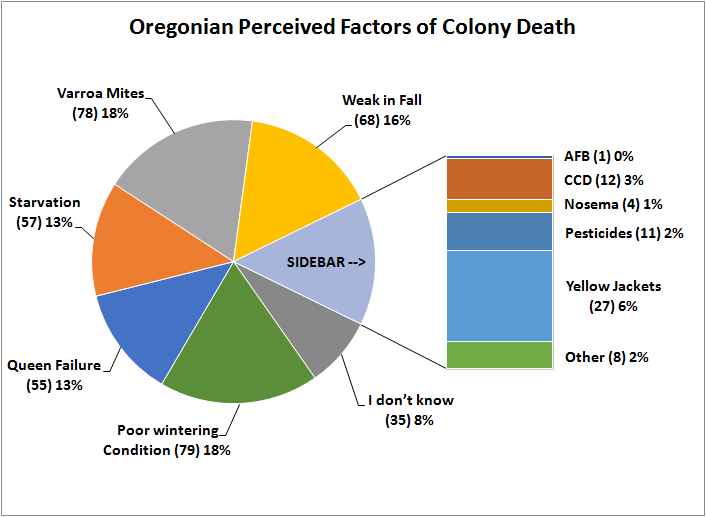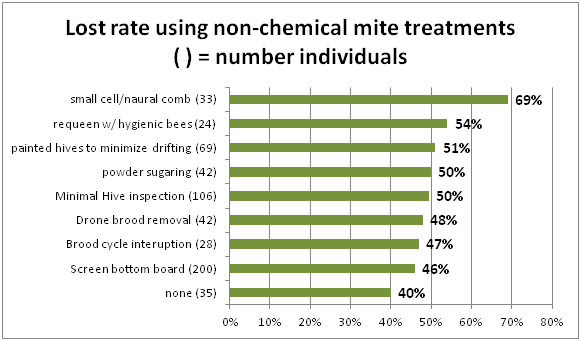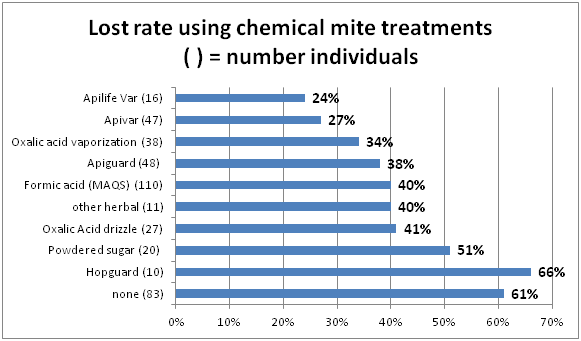Finman
Queen Bee
- Joined
- Nov 8, 2008
- Messages
- 27,887
- Reaction score
- 2,023
- Location
- Finland, Helsinki
- Hive Type
- Langstroth
http://pnwhoneybeesurvey.com/survey-results/2016-17-survey-reports/
Strange that I did not find this with E-browser. Firefox found it and smartphone.
016-17 Survey Reports
Winter Bee Losses of Oregon Backyard Beekeepers, 2016-2017 by Dewey M. Caron and Jenai Fitzpatrick (View PDF report here)
Lots of information
Here is couple interesting...
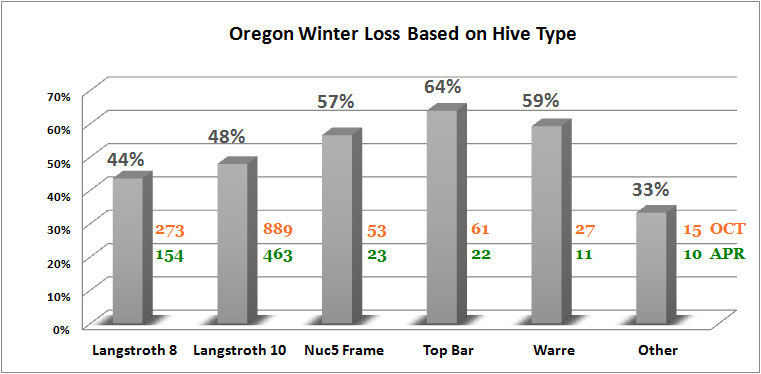
Strange that I did not find this with E-browser. Firefox found it and smartphone.
016-17 Survey Reports
Winter Bee Losses of Oregon Backyard Beekeepers, 2016-2017 by Dewey M. Caron and Jenai Fitzpatrick (View PDF report here)
Lots of information
Here is couple interesting...

Last edited:




